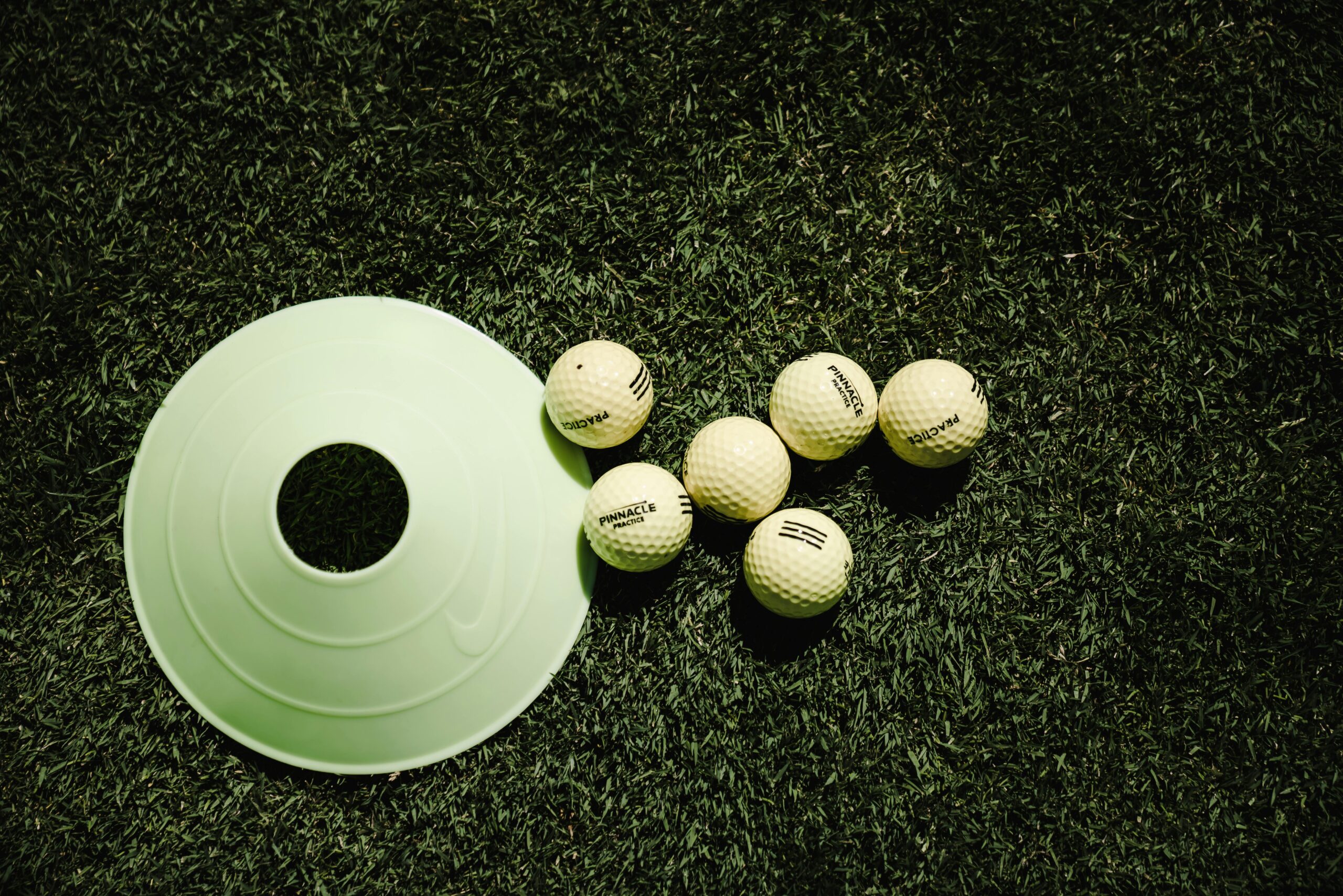Introduction
Alright, ladies—let’s talk balls. Golf balls, of course. If you’ve ever wondered whether that soft-feeling ball really helps or if you should be playing what the pros use, you’re not alone. Choosing the right golf ball isn’t just about brand loyalty or what color looks good in your bag (though that does matter). It’s about performance—pure and simple. So what works better for women: soft or firm golf balls? Let’s tee up the truth and help you find your perfect match.
The Science Behind Soft and Firm Golf Balls
What Makes a Golf Ball “Soft” or “Firm”?
It comes down to compression. A soft ball compresses easily when struck, while a firm ball resists compression and stays rigid longer.
Compression Ratings Explained
Compression is measured in numbers. A low-compression ball (30–60) feels softer. High compression (90+) feels firmer and requires more swing speed to compress.
Cover Materials and Their Impact
Urethane covers tend to be softer and offer more spin, while ionomer covers feel firmer and provide more durability. Cover type plays a big role in how a ball feels around the greens.
Key Differences Between Soft and Firm Balls
Feel at Impact
Soft balls give that “buttery” feel when you strike it well—especially off irons and putters. Firm balls feel more responsive, but also harsher if you mishit.
Spin and Control Around the Greens
Soft balls typically spin more, offering better control for chips and pitches. Firm balls have less spin, which can be helpful for straighter shots off the tee.
Distance and Ball Speed Off the Tee
Firm balls usually produce higher ball speeds for faster swingers. But for most women with slower swing speeds, soft balls actually travel farther.
How Swing Speed Affects Ball Performance
Slower Swing Speeds and Low Compression Balls
Most women average swing speeds under 80 mph. Low-compression balls help those players get the ball up in the air and maximize carry distance.
Faster Swing Speeds and the Case for Firm Balls
If you swing 90+ mph, you can compress firmer balls and get more out of them. But if you can’t compress the ball properly, you’ll lose distance.
Matching Swing Speed to Compression
You want your ball to match your swing. Too firm, and you leave power on the table. Too soft, and you may overspin your approach shots.
What Do Women Golfers Typically Need?
Average Swing Speed for Female Golfers
Most women swing drivers between 60 and 80 mph. That makes soft or low-compression balls a logical choice.
Prioritizing Distance or Control?
Want more distance? Soft balls. Need more spin and stopping power on approach? Again—soft balls often win.
Comfort and Confidence Factor
Let’s not forget feel. If a ball feels harsh, it affects confidence. That soft thud is reassuring. And yes, that matters.
Benefits of Playing Soft Golf Balls for Women
Easier Compression for More Distance
You don’t need to swing like a pro. Soft balls compress easily and fly farther, especially for players with moderate speed.
Softer Feel for Better Feedback
It’s easier to tell when you hit it flush—and when you don’t. That feedback helps you learn faster.
More Forgiving on Mishits
If you hit it a little thin or off the toe, soft balls absorb some of the impact and still give decent performance.
Benefits of Playing Firm Golf Balls for Women
More Roll on the Fairway
Firm balls tend to roll out more—especially helpful on dry courses where rollout matters.
Lower Spin for Straighter Shots
If you struggle with slices or hooks, lower spin from a firmer ball may help reduce curve.
Durability Over Time
Firm balls usually last longer and resist scuffing. You’ll save a little money over time if you don’t lose them first!
Best Soft Golf Balls for Women
1. Callaway Supersoft
Ultra Low Compression and Consistent Carry
A favorite for female golfers. It flies high, lands soft, and feels great off every club.
Soft Cover for Greenside Feel
Spin control for chips and pitches? Check.
2. Bridgestone Lady Precept
Designed Specifically for Female Swing Speeds
Engineered to be extra soft for slower swingers.
Softest Ball in the Bridgestone Line
This one delivers distance and control.
3. Srixon Soft Feel Lady
Great Control and Visibility
Available in vibrant colors and packed with tech.
Excellent for Intermediate-Level Players
Perfect for women moving from beginner to more serious golf.
Best Firm Golf Balls That Women Also Love
1. Titleist Pro V1
Tour-Level Performance with Controlled Spin
If you have a faster swing, this ball gives incredible control.
For Advanced Women with Higher Swing Speed
Not for beginners—but a dream for experienced players.
2. TaylorMade TP5
High Launch and Penetrating Flight
Firm core, soft outer layer—built for serious golfers.
Dual Core for Power and Control
Best for women who want total performance from tee to green.
3. Vice Pro Plus
Firm Feel with Maximum Distance Potential
This ball is affordable, durable, and tour-tested.
Great for Players Seeking Longer Roll
It launches fast and rolls for days.
How to Test Which Ball Works Best for You
On-Course Testing vs. Driving Range
Always test balls where it counts: the course. Ranges won’t give you true short-game feedback.
Comparing Feel, Distance, and Control
Play a few holes with different models. Notice how they perform off the tee, on approaches, and while putting.
Create a Personal Golf Ball Performance Chart
Track average distance, shot shape, and scoring. Let real numbers guide your final pick.
How Age and Strength Can Influence Ball Choice
Senior Female Golfers and Softer Balls
As swing speeds decline, soft balls help maintain distance and feel easier on the joints.
Stronger, More Athletic Golfers and Firmer Options
If you’ve got power, firm balls may unlock even more potential.
Comfort Over Ego: Playing What Works
It’s not about labels—it’s about results. Don’t fear the “Lady” ball if it fits your game.
Myths About Women’s Golf Balls Debunked
You Must Play “Lady” Balls
False. If a men’s or unisex ball fits your swing, play it.
Soft Balls = No Distance (False!)
Plenty of soft balls outdrive firmer ones—especially for women.
All Firm Balls Are for Pros Only
Nope. Some firm balls are designed for mid-handicappers with decent speed.
Making the Switch: Soft to Firm or Vice Versa
Signs It’s Time to Try Something New
If you’ve plateaued in distance or struggle with short-game spin, it might be time to switch.
What to Expect When You Switch
You’ll likely notice changes in feel, ball flight, and roll. Give it a few rounds before deciding.
Adjusting Strategy Based on Ball Feel
You may need to aim differently on chips or expect different bounce. Adapt your game accordingly.
Cost vs. Performance: Which Ball is Worth It?
Budget-Friendly Soft Balls that Perform
Callaway Supersoft, Wilson Duo Soft+, and Top Flite Empower all deliver without breaking the bank.
High-End Balls and Real ROI
If you practice and play often, investing in a premium ball may be worth it.
Buying Sleeves to Test Before Committing
Start with 3-ball sleeves. Test before buying a dozen.
Final Thoughts: There’s No One-Size-Fits-All Ball
At the end of the day, the best ball for you is the one that matches your swing speed, your feel preferences, and your goals on the course. Soft or firm—it’s not about the label. It’s about the result. Try a few, track your performance, and trust what works for you—not what someone else says you should play.
FAQs
1. What compression is best for women’s golf balls?
Most women benefit from balls with 30–60 compression, depending on swing speed.
2. Can I use a soft ball even if I swing fast?
Yes! Some pros prefer soft balls for feel. It’s about balance between control and performance.
3. Will firm balls give me more distance?
Only if you swing fast enough to compress them properly. Otherwise, they may cost you yards.
4. Are “lady” golf balls just marketing?
Some are. Others are designed with lower compression and softer covers, which help many women golfers.
5. How often should I reassess my golf ball choice?
At least once a year—or anytime your swing, strength, or scoring trends change.









